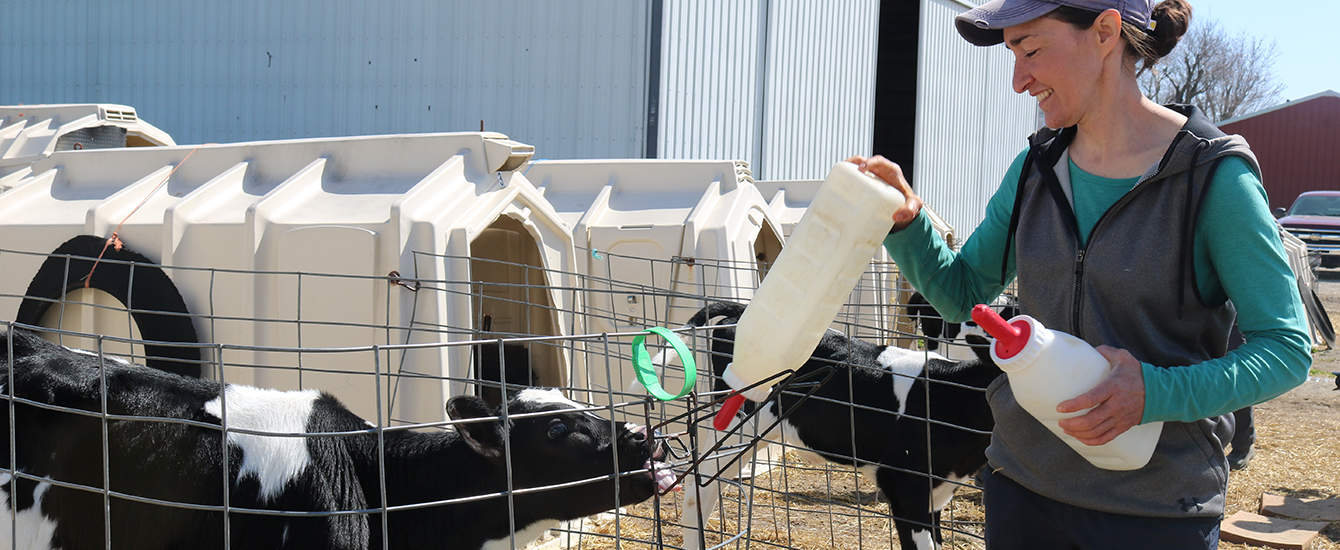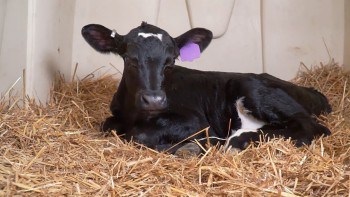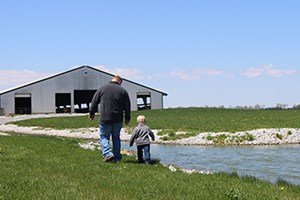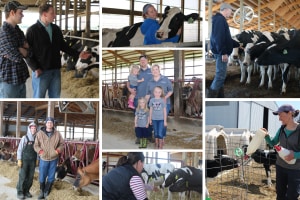For dairy farmers, caring for their animals is an around-the-clock job! It means working seven days a week, 52 weeks a year to provide a nutritious diet, good medical care and healthy living conditions for their cows and calves.
Maintaining Animal Well-being
Dairy farms — whether large or small — make animal care a top priority. Dairy farmers’ commitment to ensuring high-quality milk begins with taking good care of their cows and treating them with respect. Farmers work closely with veterinarians, animal nutritionists and other professionals to keep their animals healthy and comfortable. Dairy cows and calves receive periodic checkups, vaccinations and prompt treatment of illness.
Providing Safe Housing
For the first 2-3 months of their lives, most calves live in individual pens. These pens have ample space for the calf to move about and protect them from other members of the herd and bad weather. Individual housing also allows farmers to closely monitor each calf’s health and ensure he or she is receiving good nutrition. When calves are around 3 months old, they will be moved into a group pen with other calves of similar age and stay with these pen-mates until they are about 2 years old and have their first calves.
Many of Ohio and West Virginia’s dairy cows live in freestall barns, a type of climate-controlled barn where cows are free to move about as they choose. Barns are commonly equipped with fans and misters to keep the cows cool in the summer and have curtains that can be lowered to block the wind and keep cows warm in the winter. Soft bedding is used like sand, straw, mattresses or even waterbeds to keep cows comfortable, who spend 12-14 hours a day lounging and resting. Talk about a 5-star stay! To keep cows clean, manure is removed from the barn daily and placed in temporary storage, which can include a pit, tank or holding pond until it can be used for fertilizer. Some cows have access to pasture, but this is typically determined by geography, land availability and weather conditions.
Feeding Balanced Diets
All cows and calves have continuous access to clean water and food. Dairy farmers work with animal nutritionists to develop balanced and nutritious diets, making dietary adjustments for growth, development, milk production and health changes such as pregnancy.
Dairy cows eat about 100 pounds of feed and drink 30-50 gallons of water (about a bathtub full) each day. The ingredients in the cow’s feed vary by season and geography. They are typically a combination of hay, grains (corn, wheat and barley) and proteins (soybean and canola), plus vitamins and minerals. By-products from food and fiber industries like citrus pulp and cottonseed can also be included in cows carefully balanced diets and converted to milk rather than sent to landfills, thanks to cows’ unique, 4-chambered stomachs. Now that’s some innovative upcycling!
Dairy calves are fed colostrum (a mother’s first milk) within their first 24 hours of birth to ensure they get all the antibodies, nutrients and minerals needed for a healthy start. For the next 2-3 months, they will drink milk or a specially formulated milk replacer. Then they are weaned off milk and fed a diet of grain, hay and water. Calves are picky just like most children, so most calf grain is coated in molasses to make it sweeter and taste better.
Milking Cows
Today’s milking parlors utilize the latest technology for safety, comfort and productivity for both the cow and the person milking. Dairy cows are milked at least twice a day by an automatic milker — it doesn’t hurt at all, and the cows look forward to being milked!
Cows come into the clean milking parlor 2-3 times a day to be milked. Milking parlors can come in different configurations, but the most common types in Ohio and West Virginia are herringbone, parallel and rotary parlors. Robotic parlors are also becoming more popular.
The cows enter the parlor as a group and file into individual stalls that are equipped with a milking unit and designed to keep the cows stress-free and comfortably in place. Once they’re situated in the parlor, the cows’ teats are thoroughly cleaned, and the milking machine is attached. The milk will start to flow through the milk machine into sanitized stainless steel pipes which transport the milk to a refrigerated storage tank. After the cow is finished milking, her teats are covered with another sanitizer to protect and condition the teats before leaving the parlor. Each milking takes about 5-7 minutes, and each cow produces between 6 to 10 gallons of milk each day.





